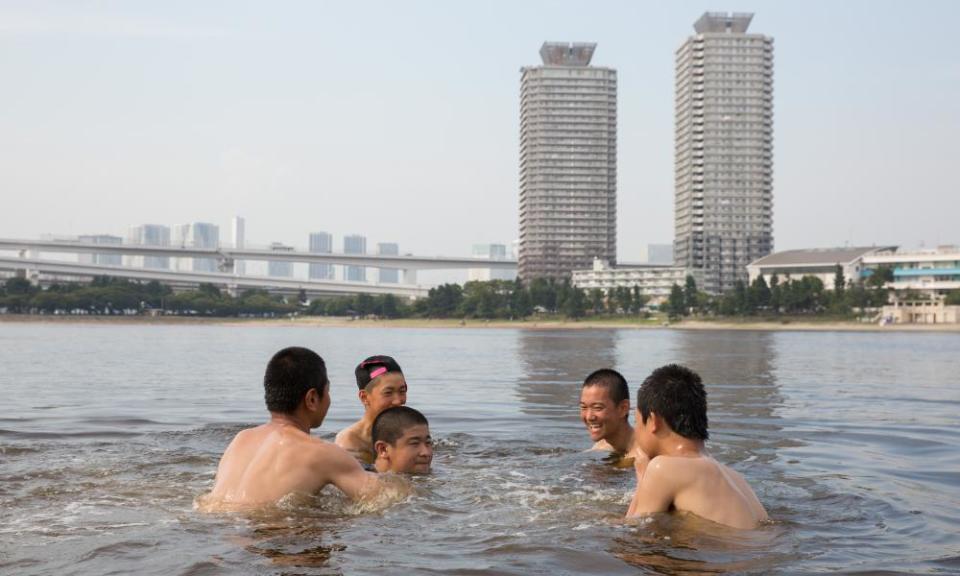Japan heatwave: record broken as concern grows over 2020 Olympics
The temperature rose to a record 41.1C (106 Fahrenheit) in a city north-west of Tokyo on Monday, as Japan’s deadly heatwave fuelled fears about potentially dangerous conditions for athletes and spectators at the Tokyo 2020 Olympics.
The temperature was recorded in Kumagaya, in Saitama prefecture, topping the previous high of 41C in the western prefecture of Kochi in August 2013, the Japan Meteorological Agency said. Records go back to varying dates for different cities, with data for Kumagaya starting in 1896.
Several events are being held this week to mark the two-year countdown to the Olympics, but sweltering weather across the country has brought fresh concerns over the risk of heatstroke.
Central Tokyo reached 39C on Monday, which “feels like” 43C when taking into account other factors such as humidity. Across Japan, dozens of people have died from heat-related conditions over the past two weeks and thousands have been taken to hospital.

Last week, the International Olympic Committee approved a competition schedule for the Tokyo Olympics, with an early start time of 7am set for the marathon events.
Makoto Yokohari, a University of Tokyo professor who has studied heat stress risks facing runners in the Tokyo 2020 Olympic marathon, said the earlier start was an improvement “but by far behind the sufficient level”.
According to a recent paper he co-wrote, the proposed marathon course was rated as dangerous or extremely dangerous on clear sunny days.
Yokohari said the organisers should take all possible measures to improve the situation – including considering potentially radical ideas such as moving the marathon to the northern prefecture of Hokkaido or starting it at 2am.
Other options included allowing runners to run on the eastern side of streets so they can be shielded from the sun.
“However, as far as you will be having the race in Tokyo in mid-summer, none of the measures, even a pile of all measures, can ensure safety,” he told the Guardian.
Yuriko Koike, the Tokyo governor, said the last few days had been “like living in the sauna”. She said dealing with the heat issue was “indeed one pillar for the success of the 2020 Games”.
A Tokyo 2020 spokesperson said the organisers were planning heat countermeasures such as the installation of cooling mist showers for the athletes. Schedules would be finalised “in consideration of the need to protect athletes and spectators from heat”.
“We will prepare concrete measures after examining the results of test events due to be held in July 2019,” the spokesperson said. “Our aim remains to host a Games where all athletes can safely record their personal best performances.”
Temperature monitors are to be installed at each venue, with the possibility that warnings could be issued to spectators if conditions become particularly bad.
The Olympics will run from 24 July until 9 August 2020, followed by the Paralympics from 25 August to 6 September. When Tokyo last hosted the Summer Olympics in 1964, it was held during the cooler month of October.

 Yahoo News
Yahoo News 
